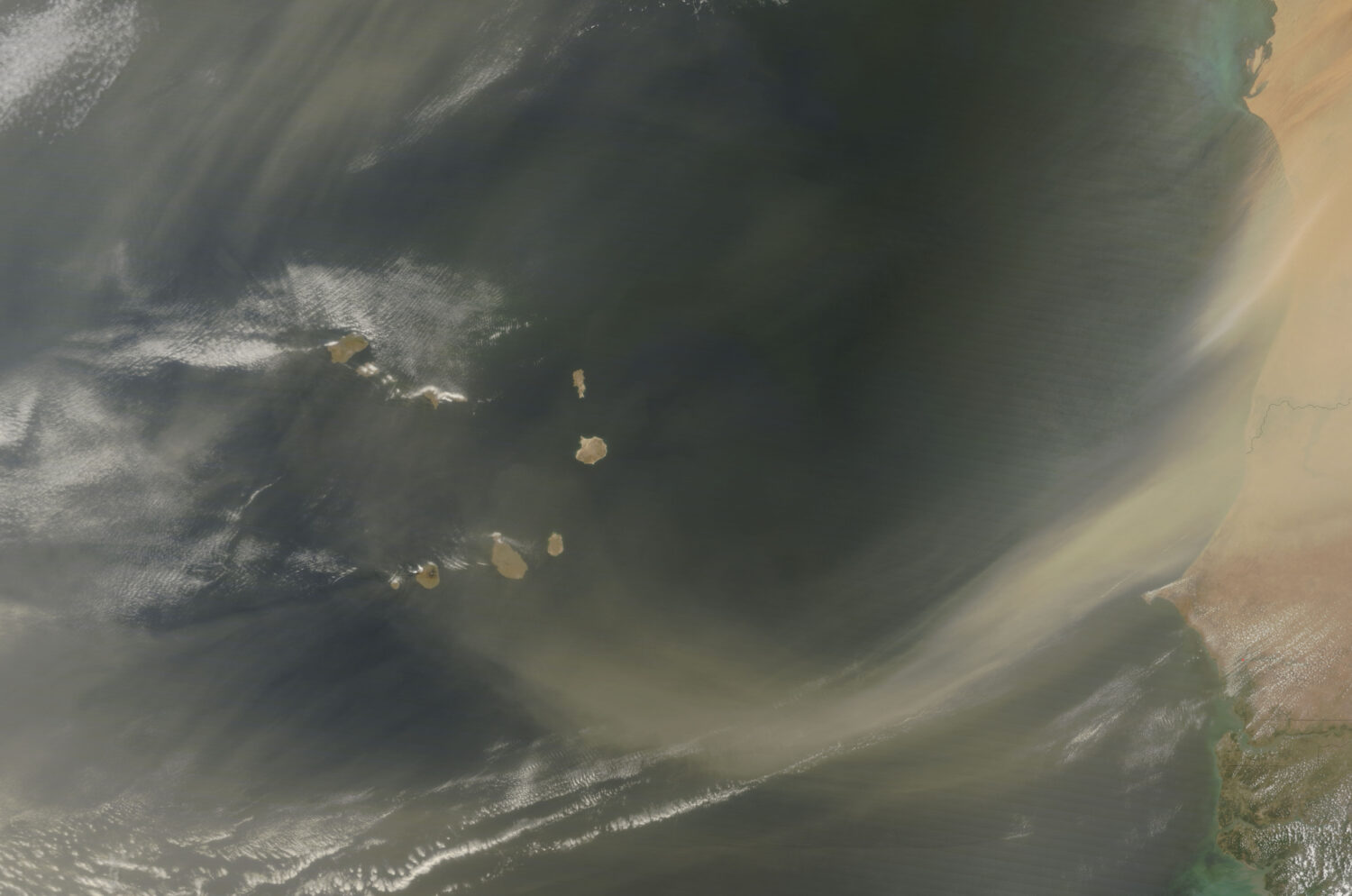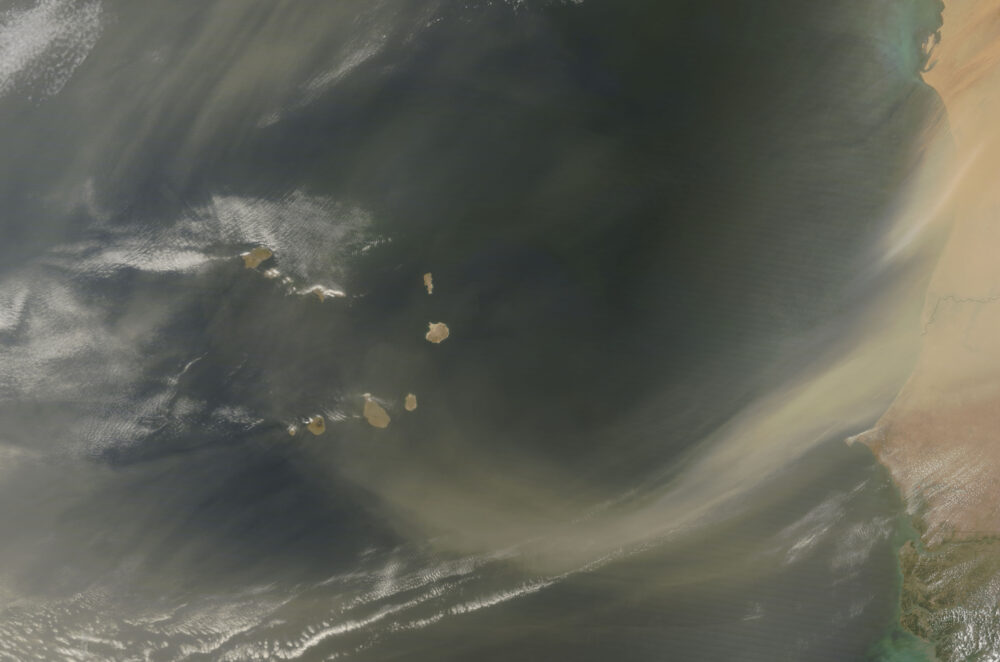NASA Earth Observatory
This June 21, 2009, file photo from the NASA Earth Observatory shows Saharan sand blowing off the coasts of Mauritania and Senegal. Although this image shows dust immediately off the coast of West Africa, a layer of dust from storms such as this often travels virtually intact to the other side of the Atlantic. This layer of dry, hot, dusty air is called the Saharan Air Layer.
An unwelcome visitor from across the Atlantic is expected to arrive in the Houston area this weekend. The annual Saharan dust plume travels thousands of miles from Africa, carried by seasonal winds.
Saharan dust clouds can tint the air, making for spectacular sunsets. But they can also cause breathing problems for people sensitive to air pollution, which can be dangerous.
“It is a problem that we face every year,” said Dr. Pushan Jani, an assistant professor of pulmonology with UTHealth Houston. “I think it’s important to make sure that our people get educated about preventative measures: mostly staying indoors if possible and wearing a mask if they are getting exposed to outdoors.”
For people experiencing respiratory issues, like coughing or shortness of breath, Saharan dust is not only dangerous — it could be deadly.
“It depends on your dust exposure and how prone you are to get dust-related illness,” Jani said. “Patients who have prior existing COPD or asthma or other lung diseases, they have a higher tendency to develop worsening cough, worsening breathing problems.”
Jani said if you suffer from breathing problems, it is best to mask up before going outdoors. An N95 mask, the ones used during the COVID-19 pandemic, are recommended.
Jani also said people should check the air quality, especially the particulate matter in the air, before going outside.

